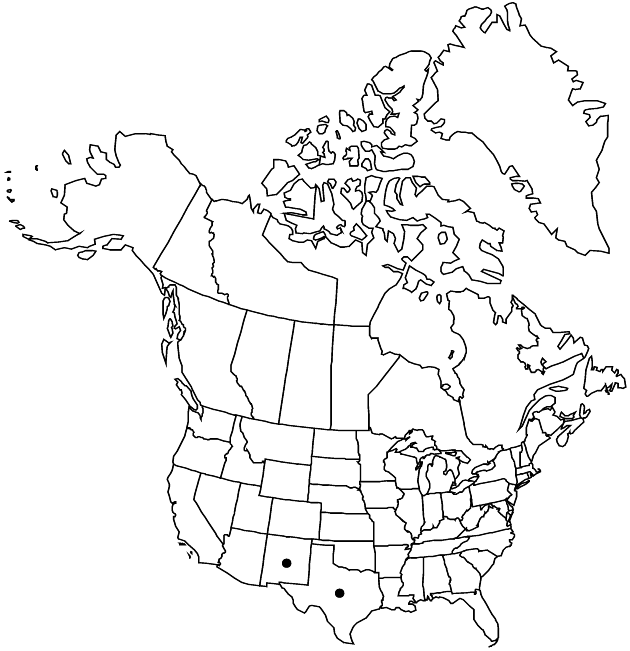Baccharis havardii
in A. Gray et al., Syn. Fl. N. Amer. 1(2): 224. 1884.
Subshrubs, 15–70 cm (much branched from bases). Stems erect (green to tan), slender, striate-angled, glabrous, resinous. Leaves present at flowering; short-petiolate; blades (1-nerved) narrowly spatulate to linear, 20–40 × 2–3 mm, reduced to bracts distally, bases attenuate, margins entire or toothed (teeth to 2 mm), faces glabrous, gland-dotted, resinous. Heads in broad paniculiform arrays. Involucres cylindro-campanulate; staminate 3 mm, pistillate 4–4.5 mm. Phyllaries lanceolate, 1–4 mm, margins scarious, medians green or brownish, apices obtuse to acuminate (thickened, slightly erose and ciliate). Staminate florets 12–15; corollas 3–4 mm. Pistillate florets 15–20; corollas 3 mm. Cypselae 2–2.5 mm, 5-nerved, glabrous; pappi 4 mm.
Phenology: Flowering Jul–Sep.
Habitat: Dry rocky hillsides, open ground, calcareous gravels
Elevation: 1500–2300 m
Distribution

N.Mex., Tex., Mexico (Chihuahua)
Discussion
Found mainly in the Chisos and Davis Mountains of West Texas, Baccharis havardii is distinguished by its short bushy habit, narrow leaves with elongate teeth, and 5-nerved cypselae. G. L. Nesom (pers. comm.) suggested that it is weakly defined and further investigation may demonstrate it should be included in the Mexican species B. sulcata de Candolle (which name would have priority over B. havardii).
Selected References
None.